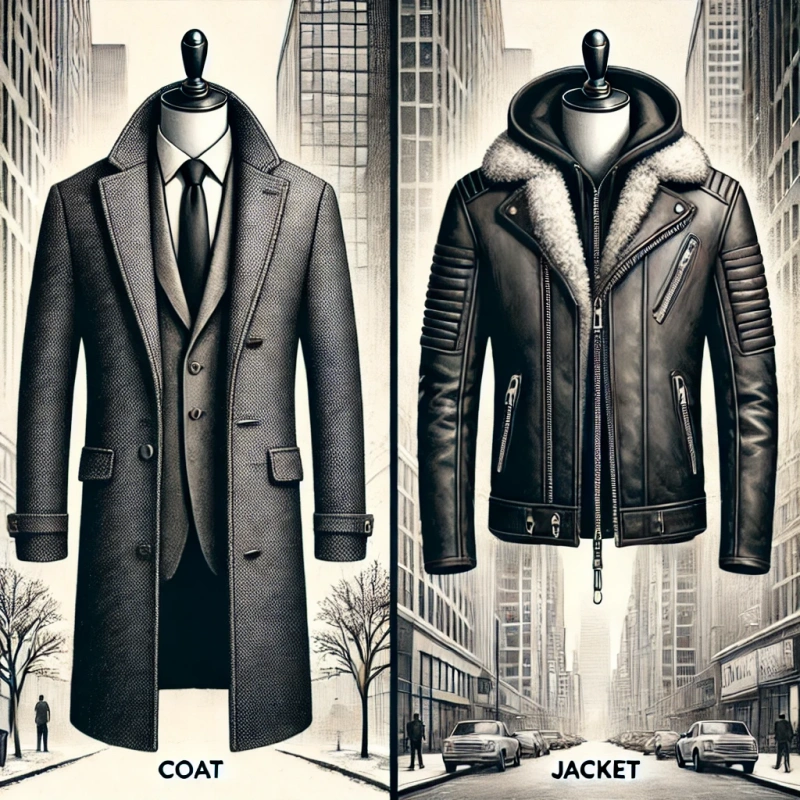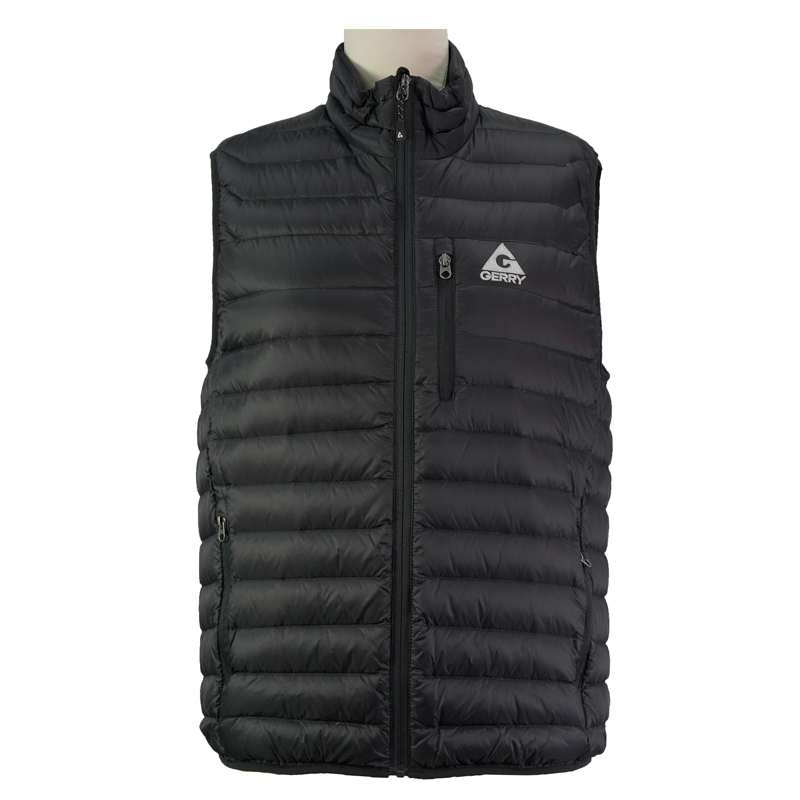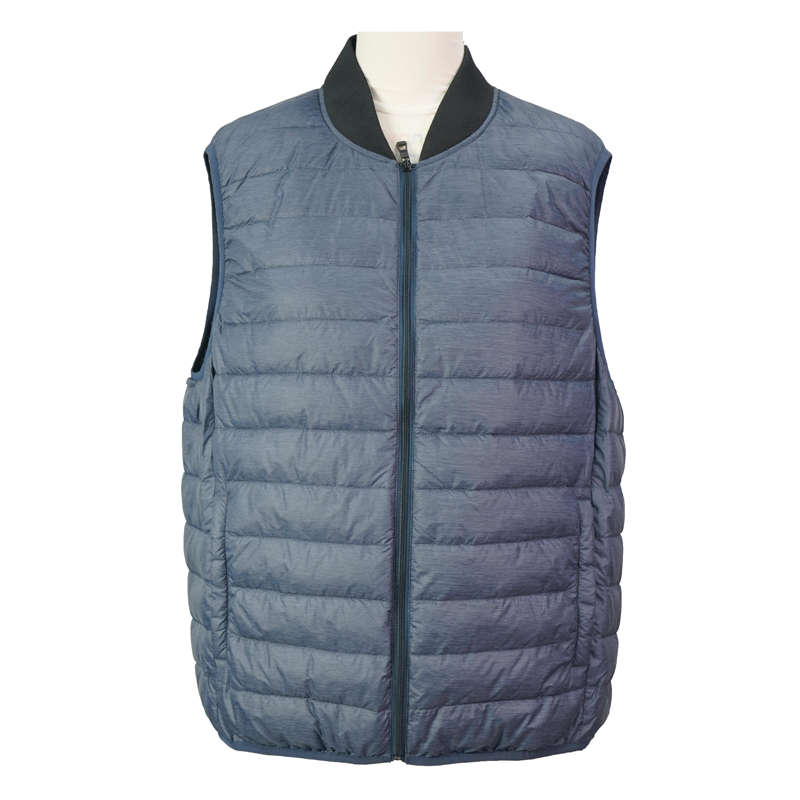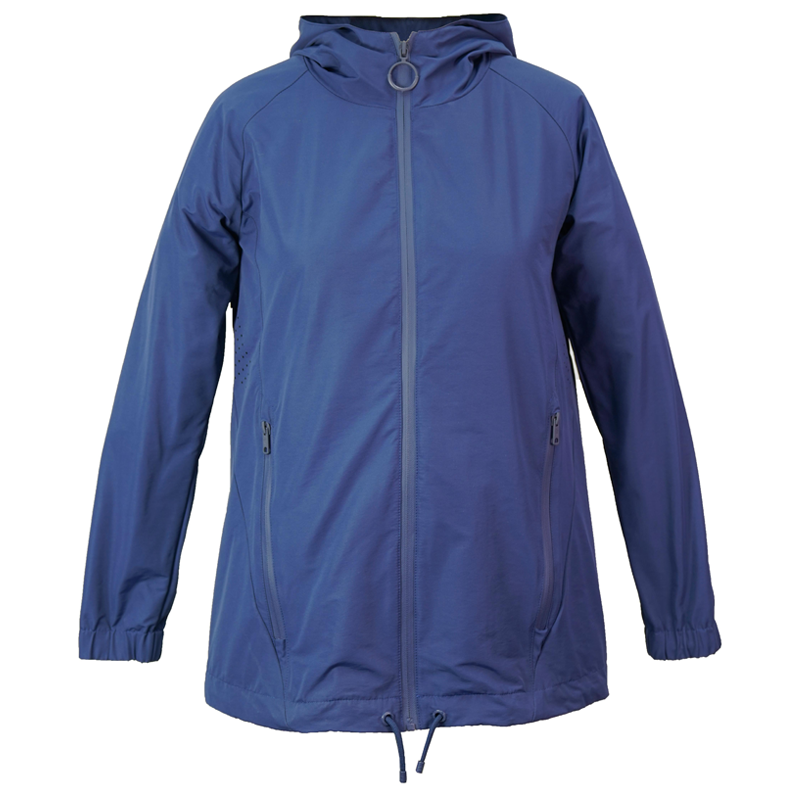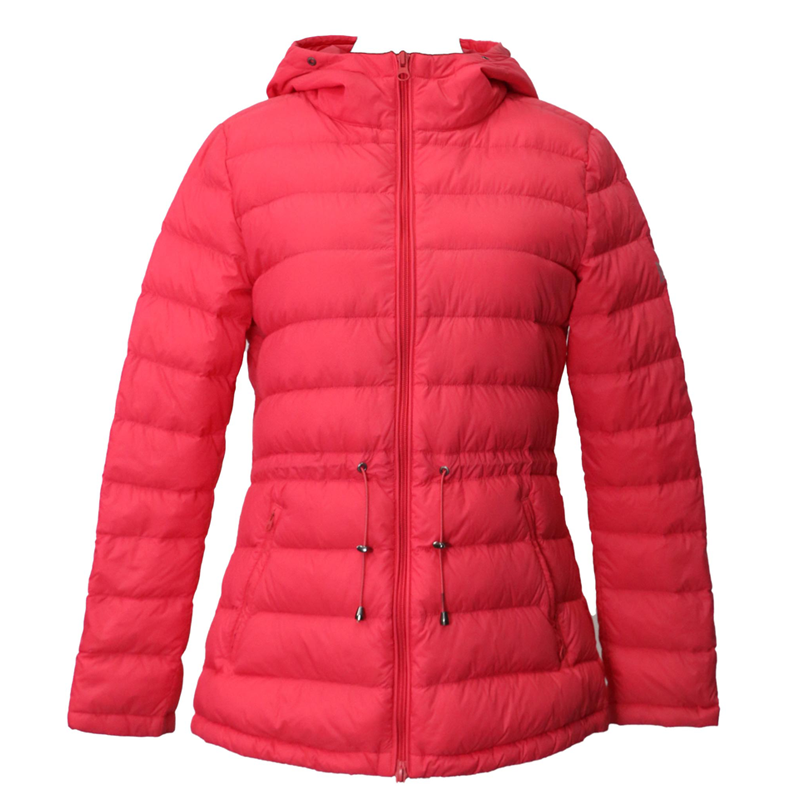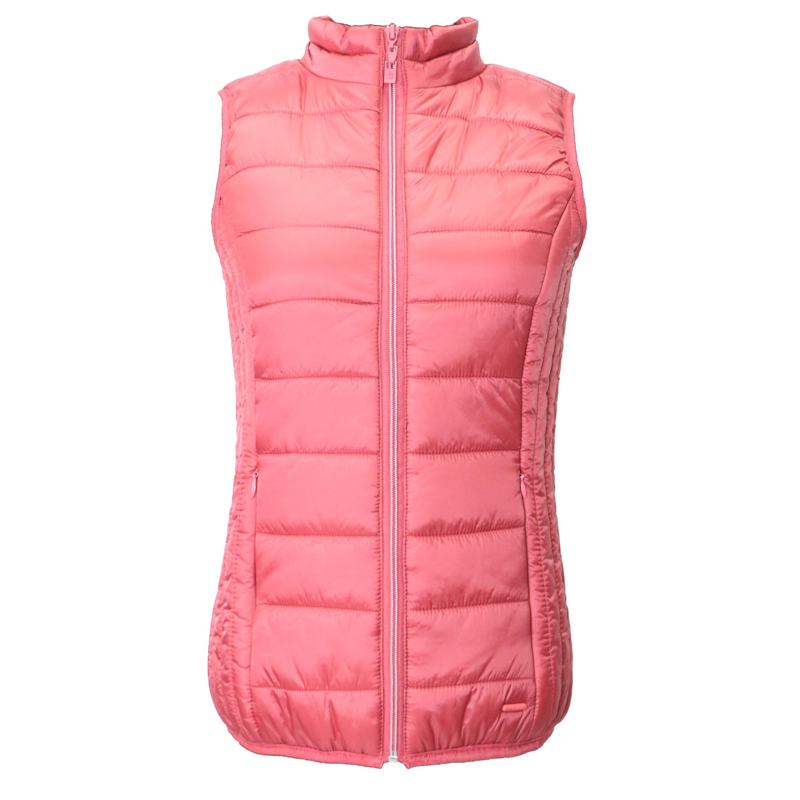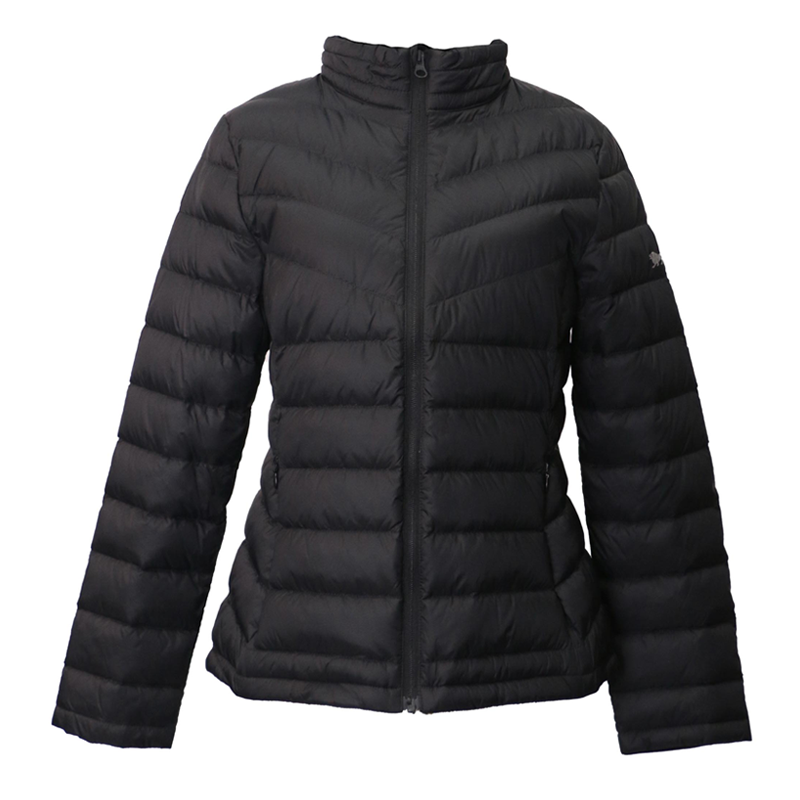When it comes to outerwear, coats and jackets often appear similar but serve distinct purposes. Understanding their differences is essential to making the right choice for your wardrobe. This article provides a detailed comparison between coats and jackets, covering their features, styles, materials, and suitable occasions for both men and women. Whether you’re looking for warmth, fashion, or functionality, this guide will help you differentiate and select the perfect outerwear.
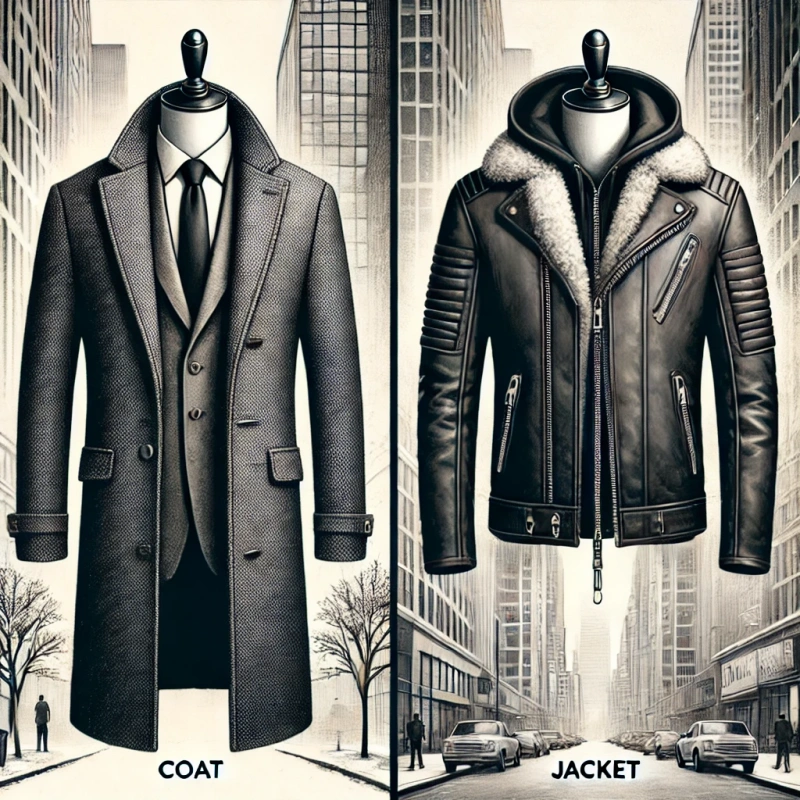
What Is a Coat?
A coat is a long outer garment designed to provide warmth and protection from harsh weather. Coats typically extend below the waist and are made from heavier materials like wool or synthetic blends, making them ideal for cold seasons.
Key Features of Coats:
Length: Usually hip-length to ankle-length.
Material: Heavy and insulating fabrics such as wool, cashmere, or down.
Purpose: Offers maximum warmth, often used in formal or semi-formal settings.
Weight: Generally heavier than jackets.
Popular Styles:
Overcoat: Classic style for formal occasions.
Trench Coat: Lightweight and water-resistant.
Peacoat: Double-breasted style with a shorter length.
Duffle Coat: Casual design with toggle closures.
What Is a Jacket?
A jacket is a shorter and lighter outer garment primarily designed for layering or providing moderate warmth. Jackets typically end at the waist or hips, making them more versatile for mild to cool weather.
Key Features of Jackets:
Length: Usually waist-length or hip-length.
Material: Lightweight fabrics like cotton, denim, or polyester.
Purpose: Offers flexibility, suitable for casual, athletic, or light layering.
Weight: Lighter than coats.
Popular Styles:
Bomber Jacket: Sporty and casual.
Denim Jacket: Timeless and versatile.
Leather Jacket: Stylish and durable.
Puffer Jacket: Lightweight yet warm for cold weather.
Comparison Between Coats and Jackets
| Feature | Coats | Jackets |
|---|---|---|
| Length | Hip to ankle length | Waist to hip length |
| Weight | Heavier | Lighter |
| Material | Wool, cashmere, tweed, down | Denim, cotton, leather, polyester |
| Warmth | Designed for cold or extreme weather | Suitable for mild to cool weather |
| Style | Formal to semi-formal | Casual to sporty |
| Occasions | Office wear, evening events, winter | Daily wear, athletic activities, fall |
| Price Range | $100 - $500 (high-end up to $1,000+) | $50 - $300 (high-end up to $500+) |
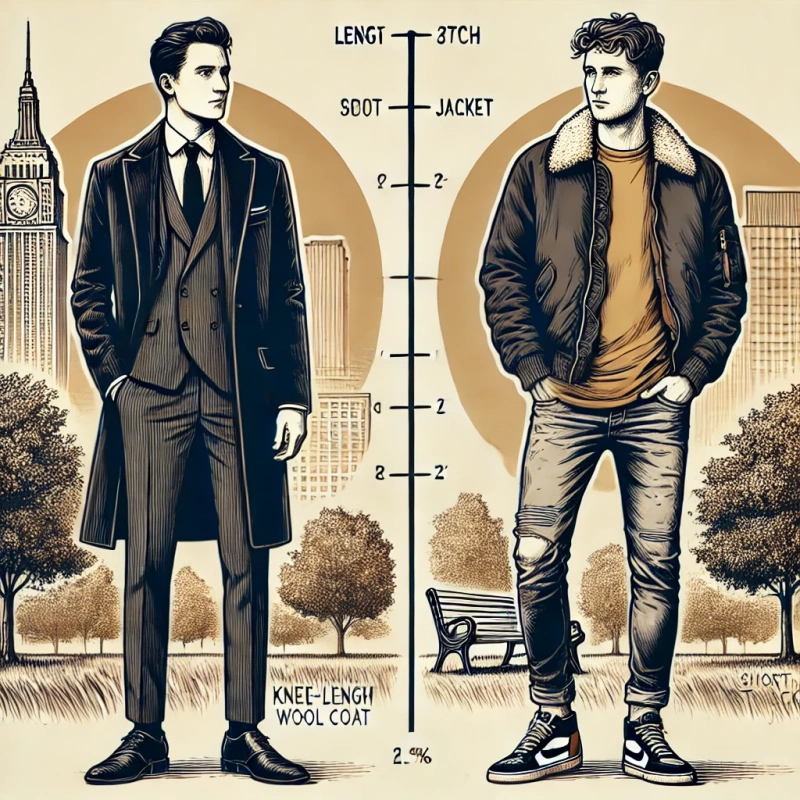
Comparison Based on Design and Functionality
1. Length
Coats:
Lengths vary from mid-thigh to full-length, offering extensive coverage to protect against cold and wind.
Example: A wool overcoat typically measures 38–45 inches long.
Jackets:
Most jackets end at the waist or hips, with designs focusing on comfort and ease of movement.
Example: A bomber jacket averages 25–30 inches in length.
2. Material
Coats:
Wool: Excellent for insulation and water resistance.
Down: Lightweight yet extremely warm.
Materials are chosen for warmth and durability, such as:
Heavier fabrics lead to a weight range of 2–5 lbs for most coats.
Jackets:
Leather: Durable and stylish, suitable for casual wear.
Denim: Versatile and iconic for casual looks.
Materials are lighter, allowing for more diverse styles:
Weight range is typically 1–3 lbs.
3. Insulation
Coats:
Designed with advanced insulation, such as quilted linings or thermal materials.
Down coats, for instance, can provide insulation equivalent to 600–800 fill power.
Jackets:
Less insulated, often relying on layers underneath for warmth.
Thin linings or single-layer designs are common for spring and summer use.
4. Style and Occasions
Coats:
Trench Coats: Timeless and sophisticated.
Peacoats: Classic double-breasted style for professional settings.
Lean toward formal or semi-formal wear:
Jackets:
Bomber Jackets: A favorite for urban style.
Blazers: Blurring the line between outerwear and formal wear.
More casual and versatile:
5. Weather Suitability
Coats:
Excellent for cold winters with temperatures below 32°F (0°C).
Example: Parkas designed for sub-zero climates.
Jackets:
Suitable for mild weather, ranging from 40°F to 70°F (4°C to 21°C).
Example: Windbreakers are perfect for breezy but not freezing conditions.
How to Choose Between Coats and Jackets
For Women:
Climate:
Choose a wool coat for cold winters or a trench coat for rainy weather.
Opt for a bomber jacket or denim jacket for mild seasons.
Occasion:
For formal events: A long overcoat or peacoat adds sophistication.
For casual outings: A leather jacket or puffer jacket works best.
Style:
Coats often feature tailored fits and neutral tones, aligning with feminine aesthetics.
Jackets come in bold patterns, cropped designs, and vibrant colors for casual flair.
For Men:
Climate:
Opt for a parka coat or down coat for harsh winters.
Choose a bomber jacket or windbreaker for lightweight layering.
Occasion:
For business settings: A structured overcoat pairs well with suits.
For casual wear: A denim jacket or leather jacket adds rugged appeal.
Style:
Coats emphasize traditional cuts and formal aesthetics.
Jackets offer more variety, from sporty to edgy designs.
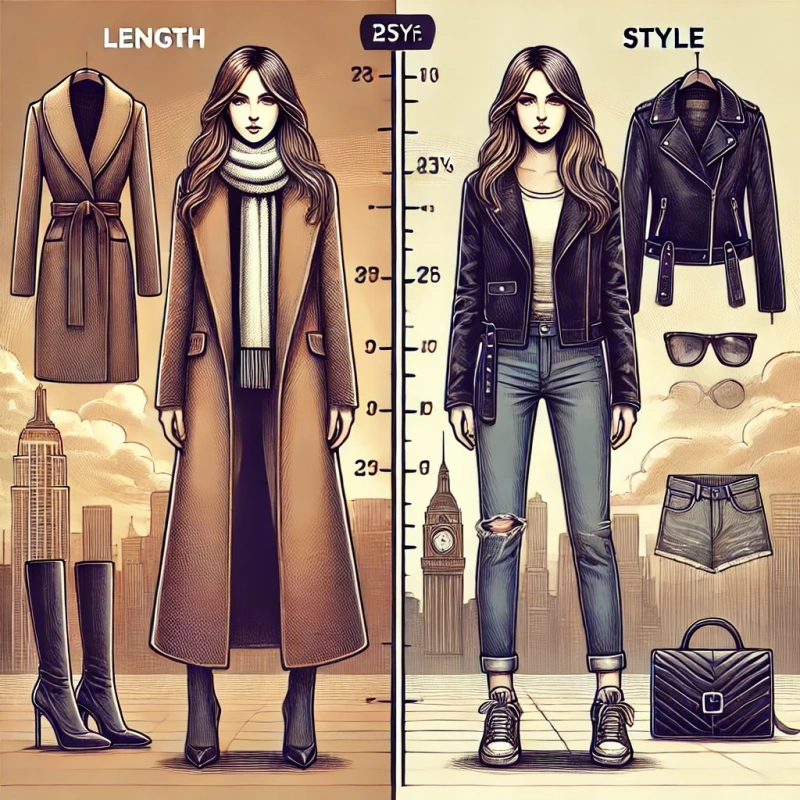
Materials and Durability
Coats:
Wool: Excellent insulation and durability; ideal for formal styles.
Cashmere: Luxurious and soft but requires extra care.
Down: Lightweight and warm; used in parkas and puffer coats.
Synthetic Blends: Affordable and water-resistant, suitable for everyday use.
Jackets:
Leather: Durable and stylish; perfect for casual and semi-formal looks.
Denim: Versatile and long-lasting, ideal for casual wear.
Polyester: Lightweight and weather-resistant, great for active use.
Fleece: Soft and warm, used in casual and sporty designs.
Women’s Coats vs. Jackets: Pricing and Examples
| Type | Price Range (USD) | Best For |
|---|---|---|
| Wool Overcoat | $150 - $500 | Business, evening events |
| Trench Coat | $100 - $300 | Rainy or windy weather |
| Denim Jacket | $50 - $150 | Casual outings |
| Leather Jacket | $150 - $400 | Edgy, versatile style |
Example:
Women’s Wool Coat: $250, tailored fit, perfect for winter offices.
Women’s Bomber Jacket: $80, lightweight, ideal for spring and fall.
Men’s Coats vs. Jackets: Pricing and Examples
| Type | Price Range (USD) | Best For |
|---|---|---|
| Down Coat | $200 - $600 | Extreme cold weather |
| Peacoat | $120 - $400 | Business casual, semi-formal events |
| Leather Jacket | $200 - $500 | Timeless, rugged style |
| Puffer Jacket | $100 - $250 | Warmth with lightweight feel |
Example:
Men’s Overcoat: $300, classic design, perfect for pairing with suits.
Men’s Denim Jacket: $70, versatile and great for casual wear.
Key Considerations When Choosing Outerwear
Weather Conditions:
Coats offer superior insulation for extreme winters.
Jackets are better for transitional seasons like spring and fall.
Occasion:
Coats suit formal and professional settings.
Jackets cater to casual and athletic environments.
Style Preferences:
Coats often align with traditional and elegant aesthetics.
Jackets provide a more modern and relaxed vibe.
Budget:
Coats generally cost more due to heavier materials and detailed tailoring.
Jackets are budget-friendly, especially for casual styles.
Consumer Data and Preferences
Weather Considerations:
60% of consumers purchase coats specifically for winter months, prioritizing warmth and durability.
40% opt for jackets for transitional seasons, prioritizing versatility.
Style Preferences:
Jackets dominate in casual wear, with denim jackets and bomber jackets being the most popular styles among millennials.
Coats are preferred for formal occasions, with overcoats being the top choice for professionals.
Purchasing Trends:
The average consumer owns 3-4 jackets but only 1-2 coats, reflecting jackets' greater versatility.
Conclusion
Both coats and jackets play important roles in a wardrobe, offering unique benefits based on weather, occasion, and personal style. While coats provide superior warmth and formality, jackets deliver versatility and comfort for everyday wear.
For Women: A trench coat is perfect for rainy days, while a bomber jacket adds casual charm.
For Men: A wool overcoat is ideal for formal settings, and a leather jacket offers timeless ruggedness.
Investing in the right outerwear ensures practicality, comfort, and style for every season and occasion. By understanding the differences between coats and jackets, you can make a confident choice that suits your needs and enhances your wardrobe.
